
Spring celebrations marking the end of winter
Just when you’re wondering if winter might last forever, the frost begins to thaw. Spring, full of green shoots and colorful flowers, is on its way! In the Northern Hemisphere, we celebrate the first day of spring on the vernal equinox. This year, it falls on March 19. Cultures around the globe have different spring celebrations for welcoming the new season, from festivals to parades—many of which we share below!
So read on for some unique spring traditions seen around the globe. India, Slovakia, Bulgaria and Thailand have their own special spring activities, including different ways to celebrate Easter (with Good Friday and Palm Sunday happening days before). There’s the “festival of love” in India and a gathering at Stonehenge in England. And did you know about the annual White House Easter Egg Roll? If not, you’ll be surprised by what you learn below!
Get Reader’s Digest’s Read Up newsletter for more holiday tips, fun facts, humor, cleaning, travel and tech all week long.
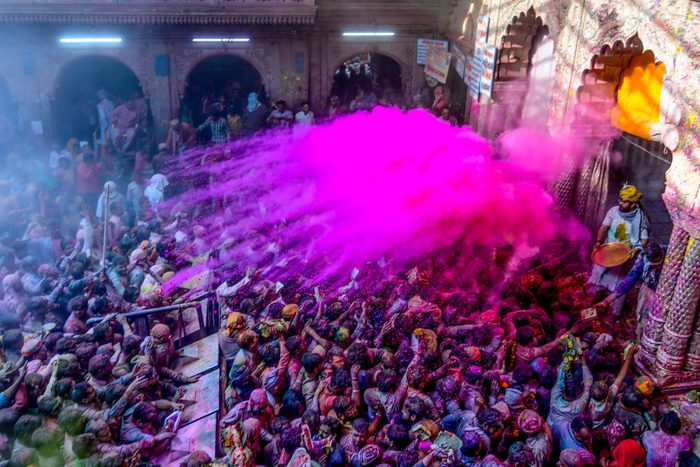
Holi (India)
If you’ve ever seen photos of men and women dancing beneath clouds of colorful powder, you’ve probably seen pictures of Holi. This Indian spring festival, sometimes called the “festival of love,” takes place just before the turn of the seasons. It brings entire communities together for one giant party. A bonfire is lit before the festival, then the rest of the spring celebration is spent dancing and playing with water and colorful powders. It is an explosion of joy and color.
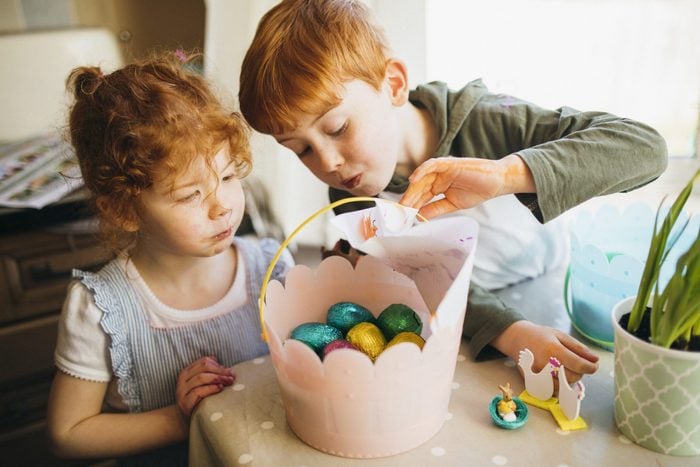
Old Easter traditions (Slovakia)
Easter is always celebrated near the beginning of the spring season, and Slovak children take a decidedly active approach to this holiday’s festivities. School-age boys braid together willow branches (and sometimes ribbons) to make decorative “whips,” which they use to chase their sisters or female friends on Easter Monday. The boys often walk to their female friends’ houses with the willows and cups of water so that they can chase the girls they like, then splash them playfully. Tradition dictates that girls reward the boys with gifts of chocolate and painted eggs—but in modern times, this is followed only by families with a good sense of humor. This spring celebration is certainly outdated, but children across the country still participate each year. Visit Slovakia’s capital, Bratislava, during springtime to enjoy one of the most affordable European capital cities.
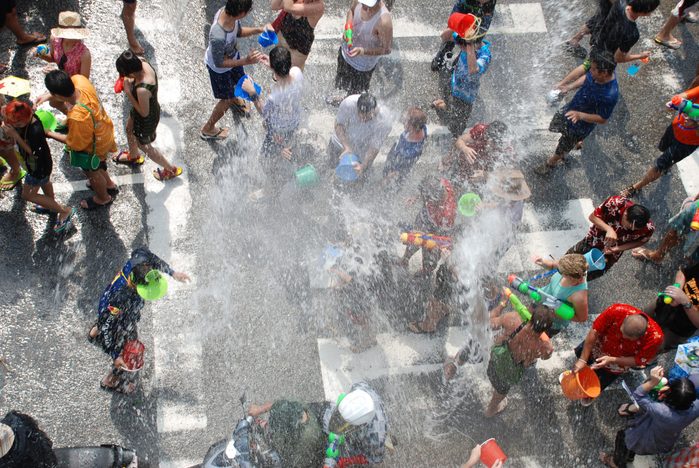
Songkran Water Festival (Thailand)
Thailand’s national New Year’s celebration occurs shortly after the spring equinox. Revelers all over the islands and cities celebrate by throwing water everywhere and on everyone. Because it’s such great fun, the Songkran Water Festival has become a popular tourist attraction. Splashing around with friends and strangers, from resident Buddhist monks to first-time visitors, seems to bring out everyone’s inner child. Loud music and dance parties in the street are the cherry on top.
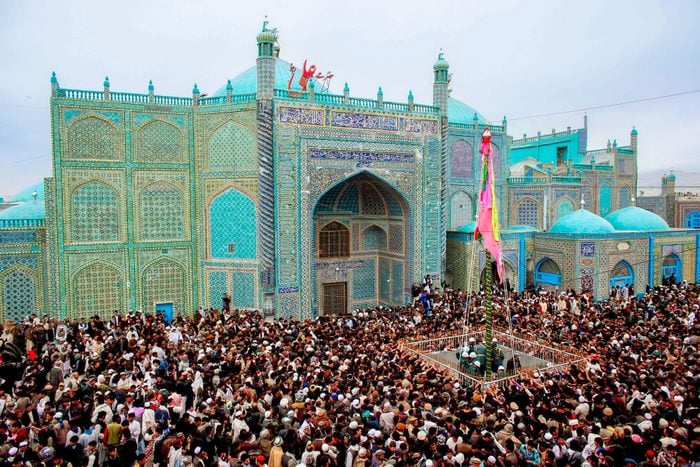
Nowruz (Central Asia)
On the first full day of spring, Central Asian communities around the world celebrate Nowruz. Though the festival is rooted in Iranian and Zoroastrian tradition, it has spread across several cultures over the past few centuries. It’s a massive celebration—as CNN says, “Think Christmas, New Year’s and Fourth of July combined.” Nowruz means “new day” in Persian, and it is the kickoff to one full month of extravagant spring celebrations. If you attend a Nowruz celebration, don’t miss the beginning, when revelers jump over bonfires to signify the start of the festivities.
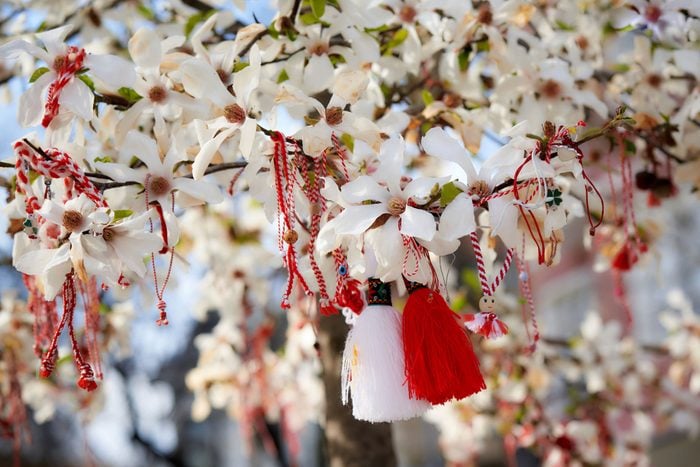
Baba Marta Day (Bulgaria)
Bulgarians acknowledge springtime before it even arrives. On March 1, they celebrate Baba Marta Day (translation: “Grandma March Day”), where they exchange Martenitsi, red-and-white twined bracelets and decorations. Bulgarians wear the bracelets or pin the decorations to their clothes in anticipation of the change of season. Martenitsi symbolize health and happiness and are considered lucky charms against evil spirits. (See? Sharing spring quotes and jokes aren’t the only ways to wish someone well for the new season.)
Whenever people see the first stork in the sky or blossom on a fruit tree—usually around the first day of spring—they take off the Martenitsi and tie them to the blooming branch. As flowers unfurl and springtime begins, you can see red-and-white strings tied up in gardens and parks all across Bulgaria.
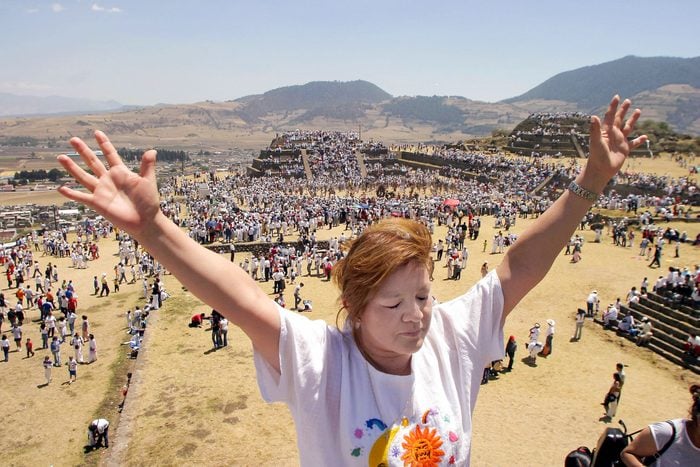
Teotihuacán ritual (Mexico)
Add Mexico to your list of travel destinations for spring break, but skip Cancun and head straight to Teotihuacán. Imagine thousands of people, all dressed alike, welcoming the season with their hands held high. Every year, tourists travel to the Teotihuacán Pyramid to do just that. Dressed in white, they gather at the base, raise their arms to the sky and welcome the sunshine and energy of springtime. Some even climb hundreds of steps to the top so that they can be a little closer to the sun. This ritual is mimicked across several ancient sites in Mexico, though the Teotihuacán Pyramid is the most accessible to visitors coming from nearby Mexico City.
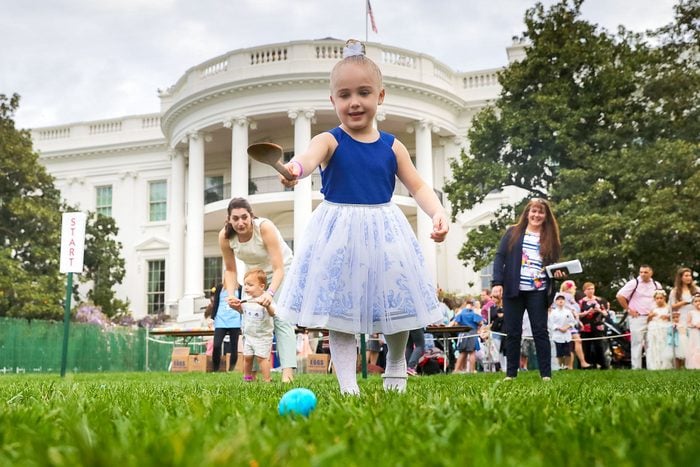
Easter egg roll (United States)
After Good Friday, it’s time to celebrate Easter, which occurs after the first day of spring. But it doesn’t quite feel like spring in Washington, D.C., until the annual White House Easter Egg Roll. This spring tradition dates back to 1878, according to the National Park Service. That’s when a gaggle of brave schoolchildren walked right up to the White House lawn and asked to play egg-rolling games there. Fortunately for them, President Rutherford B. Hayes agreed. The egg-rolling competitions have since expanded into a full garden party, complete with cookie and egg decorating and strolling along the tulip-studded gardens.
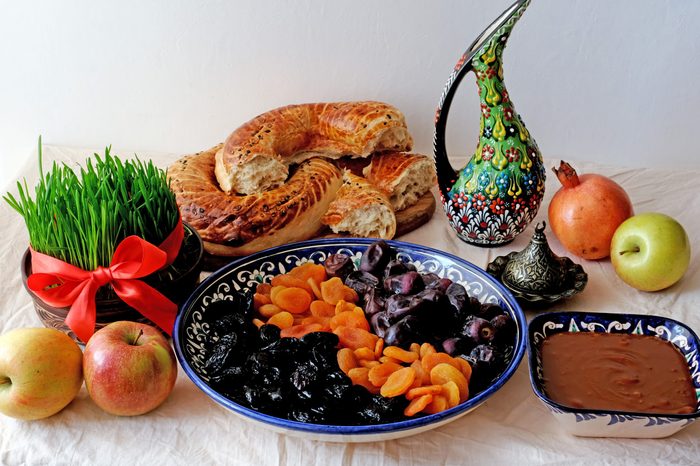
Spring feasts (Uzbekistan)
Uzbeks also celebrate Nowruz, but they put their own spin on it. To celebrate spring and new growth, they prepare sumalak, a wheat-bran pudding meant to reinvigorate people’s bodies after the chill and stagnation of winter. According to Atlas Obscura, the long cooking process brings people together to celebrate friendship and community. Wheat is placed into water, where it eventually sprouts. Then it can be crushed to make a paste, which is mixed and cooked with other ingredients for hours. The final product is served warm with tea and savored by families and friends as they celebrate the beginning of a new season.
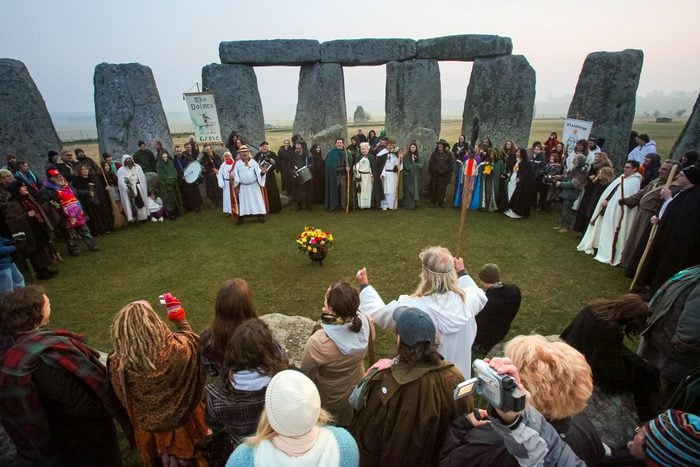
Sunrise ceremony (England)
Each year, pagans, druids and assorted revelers from around the world gather at Stonehenge in England for the first day of spring. They meet for a sunrise ceremony at one of the most ancient sites in the world. Because pagans honor nature and the cycle of the seasons, the March gathering isn’t the only annual celebration at Stonehenge. Ceremonies are also held for the summer and winter solstices, as well as for the autumnal equinox. Participants often dress in pagan costumes—men in light-colored robes and women with flowers in their hair—for this simple celebration of the seasonal shift.
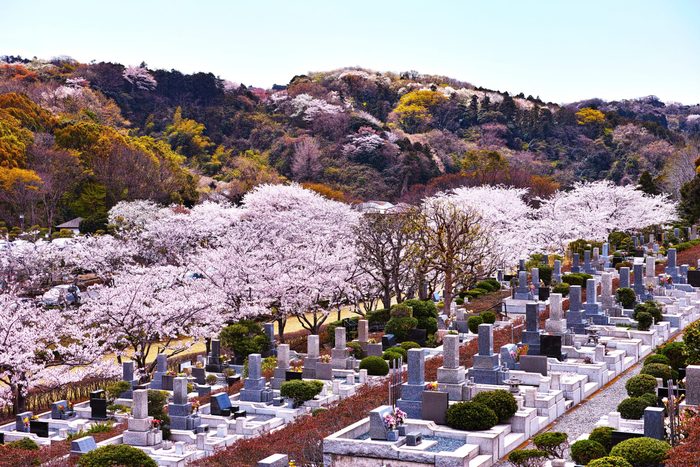
Shunbun no Hi (Japan)
The spring equinox is a national holiday in Japan that goes by the name Shunbun no Hi. Workers enjoy a day of rest, and children stay home to celebrate with their families. As the HuffPost reports, “traditionally, Shunbun no Hi is preceded and precluded by the three days of higan, the Buddhist celebration of ‘the other shore,’ in which families come together to honor ancestors who have crossed over to the next stages of life.” During higan, families clean loved ones’ gravestones and leave behind offerings of rice dumplings. After honoring the past on higan, they get an opportunity to look ahead to the future and commune with nature on Shunbun no Hi.
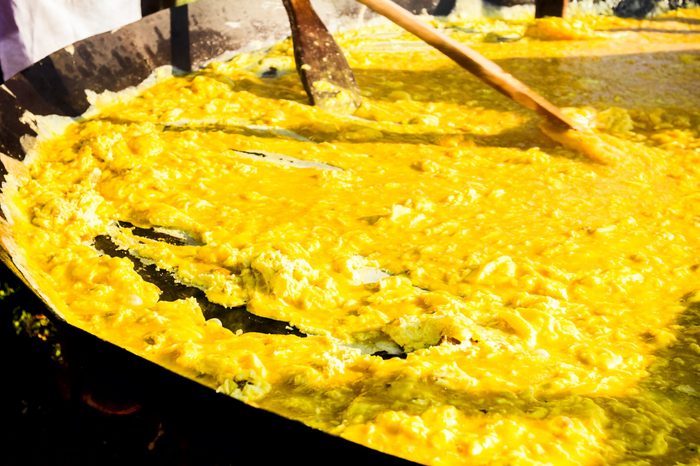
Cimburijada (Bosnia)
At the beginning of spring, Bosnians in the town of Zenica celebrate Cimburijada, which means “the festival of scrambled eggs.” Residents of the city gather together around giant pots of the breakfast food. They break bread—and eggs—together in the park and in picnic spots by the river. What could possibly be better than joining your friends and family for breakfast on one of the first warm days of the year? It’s a simple and delicious welcome to spring.
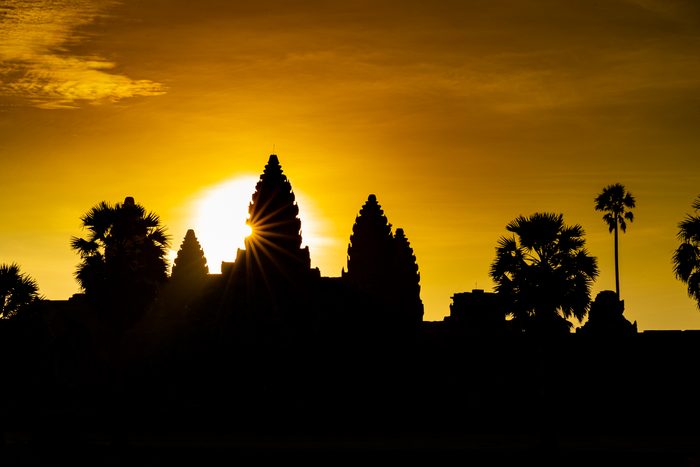
Sunrise watching (Cambodia)
Angkor Wat in Cambodia is known as one of the largest, most beautiful temples in the world. It is also nearly 1,000 years old. But did you know that it was built specifically to align with the spring equinox? The 400-acre temple complex is built so that visitors standing on one specific southern causeway will see the sunrise directly over the temple’s central tower on the first day of spring. This creates a beautiful photo opportunity each year.
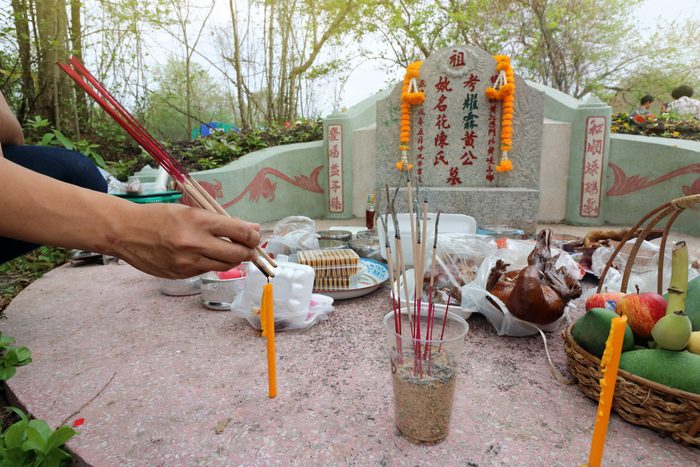
Qingming Festival (China)
The Qingming Festival, also known as Tomb Sweeping Day, is meant to mark the change of the seasons while honoring ancestors. It will be held on April 4 this year, a few weeks after the first official day of spring. During this spring celebration, Chinese families clean and decorate their ancestors’ tombs. Some people also burn incense or light firecrackers at the graves. But this holiday isn’t all about death and solemnity. Families also light beautiful lanterns at night and fly kites to enjoy the sunshine and crisp spring weather.
Why trust us
At Reader’s Digest, we’re committed to producing high-quality content by writers with expertise and experience in their field in consultation with relevant, qualified experts. We rely on reputable primary sources, including government and professional organizations and academic institutions as well as our writers’ personal experience where appropriate. We verify all facts and data, back them with credible sourcing, and revisit them over time to ensure they remain accurate and up to date. Read more about our team, our contributors and our editorial policies.
Sources:
- Holi Festival: “Holi”
- Klook: “Dive into Thailand’s Songkran Festival — The World’s Biggest Water Fight”
- CNN: “More than 300 million people will celebrate Nowruz (and you should, too)”
- Bulgarian National Television: “The Bulgarian Tradition of Baba Marta and Martenitsa”
- Mexico Experts Travel: “The first day of Spring in Mexico”
- National Park Service: “White House Easter Egg Roll event information and history”
- Ministry of Foreign Affairs of Japan’s Web Japan: “Vernal Equinox Day and Higan”
- China Highlights: “Qingming Festival 2024”
- Sarajevo Times: “Traditional Cimburijada in Zenica marked the First Day of Spring”
- Atlas Obscura: “5 Ancient Sites Built to Align with the Spring Equinox”
- HuffPost: “Celebrating Japan’s Vernal Equinox”
